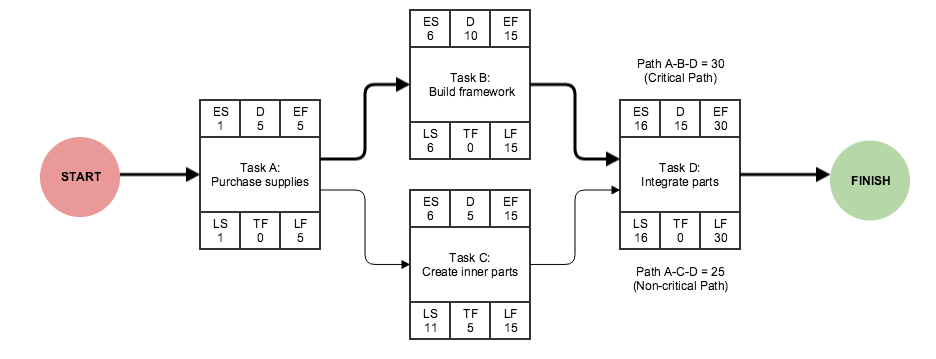Last updated: January 27, 2020
The critical path method (CPM) of scheduling tasks
One of the most vital and stressful parts of project management is figuring out your project’s schedule. It’s never easy estimating timelines and project durations, but there are methods out there that make project scheduling a straightforward process. Let’s explore one in particular: the critical path method.
What is the critical path method in project management?
The critical path method (CPM) is a scheduling method used for planning in project management. it is used to estimate a project’s duration as well as uncover any schedule flexibility. CPM can be applied to any project made up of interdependent tasks, regardless of what field — aerospace, construction, software, marketing — there is no limit. Although conceptually simple, the method and calculations behind the CPM can be intimidating. Fortunately, there is software that can handle the nitty gritty details for you. When deciding whether or not to use the critical path method, the key is understanding and recognizing if it will be useful to you in your situation.
Why should I use the critical path method?
The CPM is used to calculate the amount of scheduling flexibility on the logical network paths within the schedule model. The beauty of the CPM is that it will give you estimated early and late start and end dates for your project, even if there are multiple “routes” of task dependencies to reach completion. Using the CPM, you can identify which tasks are critical to complete, and which are not as you can identify the allotted time to that specific task. By doing a forward pass followed by a backward pass, we can discern the critical path through tasks, giving us the shortest possible project duration.
The predominant way of visualizing and representing the Critical Path Method is with a flowchart, which clearly shows project progression. Let’s look at a simple example:

For each task, we list the early start (ES), early finish (EF), late start (LS), late finish (LF), duration (D), and total float (TF). Some of these numbers—such as the durations and the first task’s early start—are defined by you, but the rest is calculated by doing simple arithmetic.
Is there an easier way to view this schedule data?
One common way of representing schedule data is by using a Gantt chart. In a Gantt chart, time is displayed horizontally along the x-axis, while the various tasks and activities that make up the project are listed vertically along the y-axis. When plotting out the order of completion for tasks in a Gantt chart, it is easy to see dependencies, durations, and timing. At a glance, a Gantt chart can tell you the project’s start and end dates, where there are gaps in the schedule, and which tasks have overlapping timelines. Most important is the mapping of the project timeline to calendar dates, which allows you to estimate due dates with enhanced accuracy.
How can I use the CPM for my project?
As with any method, the CPM can be captured as a series of steps:
1. Break down the project into discrete tasks
2. Identify dependencies between the project tasks
3. Decide an order in which to complete tasks
4. Estimate time durations for each task
5. Trace through the tasks from project start to project finish to find critical and non-critical paths
6. Pinpoint areas where alternate paths and flexibility can be found
Although the Critical Path Method can be performed manually by doing the calculations by hand, it can be a tedious process that is prone to error. These challenges, however, can be solved by using OneDesk. OneDesk can help you easily put together project schedules according to your custom needs, while still using the critical path method to provide you with the most optimized path for project success. With our Gantt view feature, you can clearly map out each individual project and how long each task is planned for. Additionally, you’ll be able to log how much time you spent on a specific task to reassess if any other tasks need to be moved around. You can also run reports on OneDesk so that you do not have to go through this tedious process. Check out our product on our website for more information, or book a demo with us to get a one-on-one learning session!
Photo Credit: “Plasticine Labirynth” / Peter Shanks / CC BY